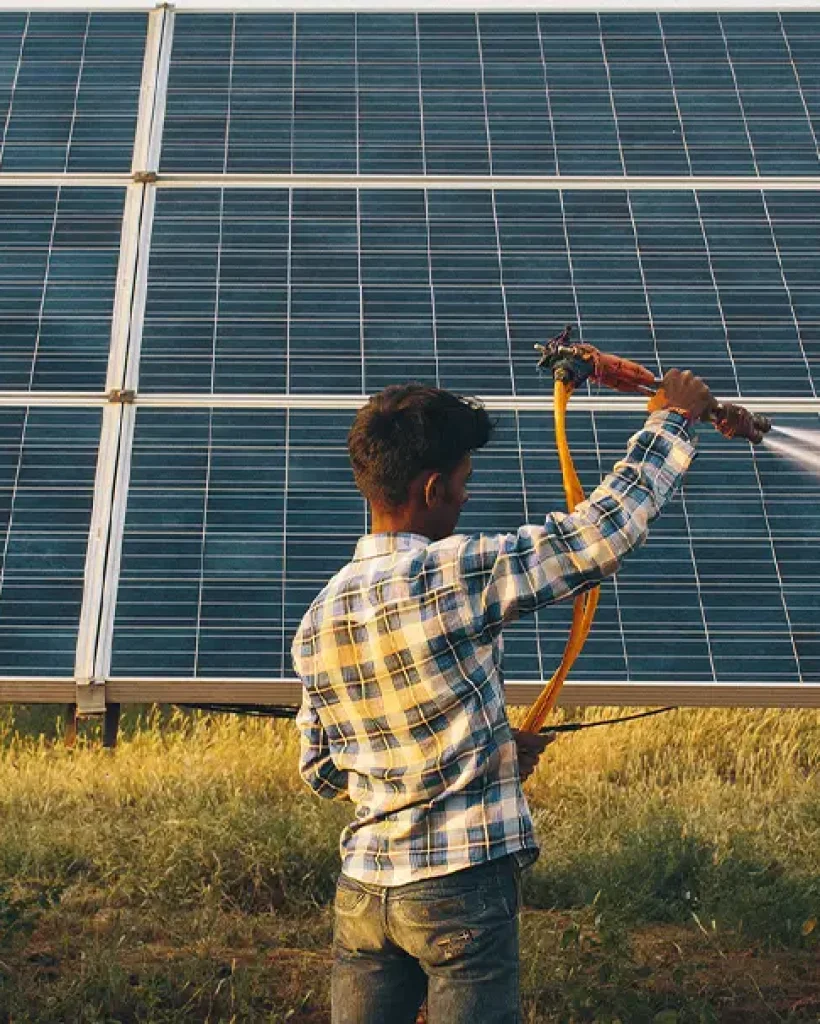PM Surya Ghar Yojana
The PM Surya Ghar Muft Bijli Yojana is a government initiative announced by our Hon’ble Prime Minister Narendra Modi. This scheme aims to reduce electricity bills for middle and lower-income families by installing solar panels in one crore homes across India.
- Home
- PM Surya Ghar Yojana


PM Surya Ghar Muft Bijli Yojana: Free Solar Home Electricity Scheme
Objective
Under the PM Surya Ghar Muft Bijli Yojana, the government will provide 300 units of free electricity every month to one crore households. This will save families approximately ₹15,000 crores annually. Additionally, households can sell any surplus power to their local electricity distribution companies (DISCOMs) to earn extra income. The scheme also aims to promote green energy, increase electric vehicle charging facilities, and create new job opportunities in solar panel supply, installation, and maintenance.
Key Features of the Scheme

Beneficiaries will receive substantial bank loan subsidies and direct subsidies credited to their bank accounts, ensuring no financial burden.

A national online portal will streamline the application and execution process, connecting all stakeholders including customers, urban local bodies, and financial institutions.

Local bodies, like panchayats and urban municipalities, will be encouraged to install rooftop solar systems.

The scheme will reduce electricity bills, generate employment, and significantly cut carbon emissions, promoting a greener and more sustainable environment.
Eligibility for PM Surya Ghar Muft Bijli Yojana

To apply for the PM Surya Ghar Muft Bijli Yojana, you must meet the following criteria:
- Must be a resident of India.
- Priority will be given to middle and lower-income groups
- Must be 18 years or older.
- Must have an Aadhaar card linked to a bank account.
Required Documents
To apply, you will need:
- Aadhaar Card
- Resident Certificate
- Electricity Bill
- Bank Passbook
- Passport Size Photo
- Ration Card
- Mobile Number
- Affidavit
- Income Certificate
Application Process
Follow these steps to apply for the PM Surya Ghar Muft Bijli Yojana:
Step 1
Visit the official website
Step 2
Click on “Apply For Rooftop Solar” on the home page.
Step 3
Register with your State, Electricity Distribution Company, Mobile Number, Email, and Consumer Number.
Step 4
Log in with your consumer number and mobile number.
Step 5
Complete the rooftop solar application form.
Step 6
Submit the plant details and apply for a net meter.
Step 7
After net meter installation and inspection by DISCOM, you will receive a commissioning certificate.
Step 8
Submit bank account details and a canceled check through the portal to receive your subsidy within 30 days.
FAQ
Popular Question
A solar rooftop system is a setup installed on the rooftops of buildings that converts sunlight into electricity. It consists primarily of solar panels, which capture sunlight and convert it into direct current (DC) electricity using photovoltaic cells. This DC electricity is then converted into alternating current (AC) electricity by an inverter, making it suitable for household appliances and grid connection. The system also includes a mounting structure to secure the solar panels on the rooftop at the optimal angle for sunlight capture, along with electrical wiring to connect the panels to the inverter and electrical system of the building.
Solar energy offers numerous financial benefits, including reduced electricity bills, a significant return on investment over time, increased property value, protection against rising energy costs, and potential tax incentives or rebates. By generating electricity from solar panels, individuals and businesses can lower their energy expenses, enjoy long-term savings, and contribute to a more sustainable future while enhancing their financial well-being.
During cloudy days or when there's no sunlight, solar panels produce less electricity compared to sunny days. However, they still generate some power even under diffused sunlight. If there's insufficient sunlight to meet the energy demand, solar systems often have backup options such as grid connection or battery storage. Grid-connected systems can draw electricity from the grid when solar production is low, while battery storage systems store excess solar energy generated during sunny periods for use during cloudy days or at night, ensuring a continuous power supply.


